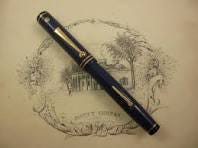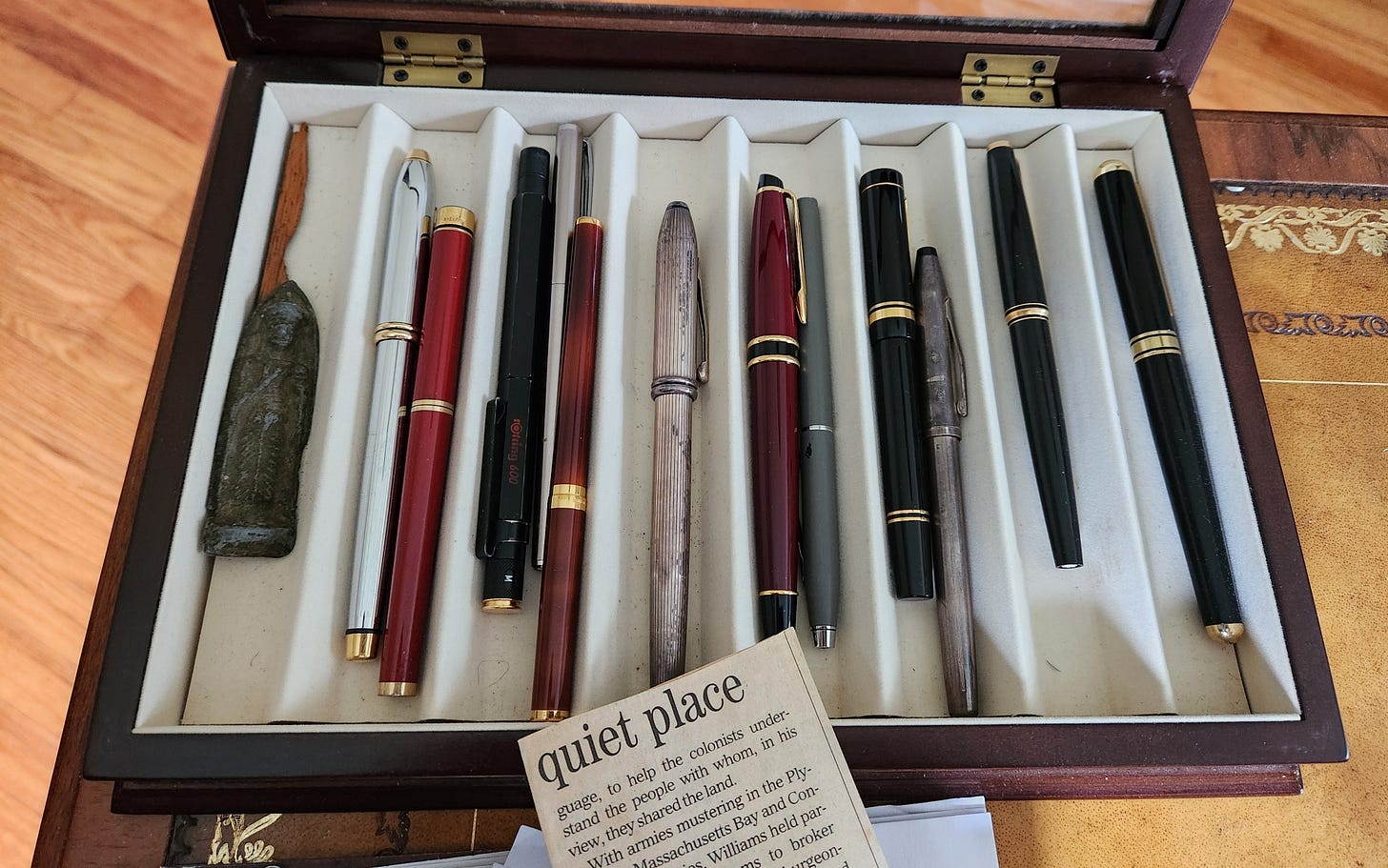Take a Pen to Paper and Write
Don't forget to smell the ink
I love writing. It motivates me to examine my life more closely. I find it relaxing and rewarding, especially when I’ve touched a nostalgic nerve with the reader, helping some to recall the ‘good old days.’
There is a strong emotional component. For example, I’ve written about my mother’s relationship with her sisters, but when someone asks me to read the story aloud, I can't because my emotions overwhelm me.
“You wrote my story,” so many say. And I respond, “Write your own story. Leave it for your children and grandchildren. It’s important, even if they are the only ones who read it.”
It should give you as much pleasure as a great golf shot, a fine meal, or climbing into crisp, cold, sweet sheets when you're exhausted.
Says Liz Jansen, “When an elder dies, a library burns to the ground.” Don’t let your library be lost. Write. Try to write in a direct emotional way, don’t be afraid of your past. Don't worry about appearing sentimental. Go with nostalgia. It ain't so bad.
Here’s a fun story.
I fell in love with fountain pens when Miss Casey taught us penmanship in the third grade. My penmanship ceased at promising . . . letters too small, sloppily slanted, and hugging the bottom line, never quite reaching the next plateau.
“You should tilt your letters a bit more, Edward, and make them reach higher.” Miss Casey loved Sandra’s writing. I watched. Sandra focused intently, with her tongue peeking out of the corner of her mouth, her arm resting on the desk to help her letters point upward, then swoop down to the bottom as she barely bent her wrist. Her letters were angled with the same slope, tipping just enough to look like a young tree—never straight up, never leaning too far.
Palmer had to love her.
Our pens required repeated dipping into wells nestled into our desks, and it made a mess ---- ink everywhere ---- on papers, desks, hands, shirts, and pants.
I cherished an Eversharp pen, which my Dad gave me. It had a reservoir that needed only one dip for a fill. Alongside the body of the pen was a thin metal lever that, when pulled out, compressed a bladder in the pen and, when released, resulted in a sucking hiss. When the hiss stopped, the pen was full.

Over the years, though I’m not sure why, I stopped using a fountain pen until one evening when I was watching an old movie. In the scene, someone is writing on gleaming white paper with a quill, blue-black ink, and using two hands; fingers steadying the paper in the upper left; the writing hand caressing the pen as if it were a baby bird. Miss Casey would have given this writer an “A” for the abundant, tall, looping letters and smooth strokes.
I have returned to my days of penmanship, ink, and fountain pens. I thought, “This is what we should be doing rather than e-mail. We should be writing to people on paper with a pen and ink. Even broken penmanship can be like smooth, soft summer waves that carry the thought.”
So, now that’s what I try to do: send a handwritten note. I use antique blue-black ink. I hold the paper and the pen like that person in the movie, wait a moment, bend my wrist, and then try to sweep the strokes. I pause at intervals to bring the pen to my nose to smell the metallic, sweet ink, being careful not to ink the tip ( of my nose that is).
And this leads to my advice. Take pen to paper, and nose, to write. Take time to write to friends and loved ones. Thoughts transferred in writing come from the heart.
So why do I start my day at the computer looking at my e-mails? Necessity, I guess. But it is no longer my only means of communicating. I spend time each day with my fountain pen on paper.
Writing with a pen is important because it offers unique benefits that digital writing often can't replicate. For example:
Research shows that handwriting activates distinct parts of the brain. The act of forming letters helps with memory retention and comprehension.
Handwriting engages muscles and improves dexterity and coordination. Though slower, it forces you to be more deliberate with word choices.
The tactile experience of pen on paper is more natural, less mechanical than typing. There's something intimate about handwritten letters, journal entries, or notes that feels more personal and meaningful than digital text.
My handwriting is unique, you bet. Ask my kids.
So, how have I connected the advice of your need to write with my story of pens and penmanship?
I didn’t realize it then, but those tokens, those pens, Dad and Miss Casey launched my writing career.
Smell the ink.
© 2025



Another really great trip to the past that all of us geezers can relate to. I loved writing cursive with ink in catholic grammer school. I had to learn to print when I went to public middle school and I didn't like it one bit, and I still don't!
Ed I still have a couple of those beauties in my drawer. As you know, my mother was an elementary teacher at the John Horton School next to our Cranston home. One of my duties as a pre and early teen was to finish the production of her gray alphabet tracing cardboards. She would pencil in the letters and their capitals with a space of 1/4 inch between double lines. I would squirt glue between the lines followed by an application of gray graphite. After curing and blowing off the excess graphite powder they were ready for the finger tracing (and muscle memory) of her students. I’d like to think that I did MY best to prolong the life of beautiful cursive. I loved writing cursive with a good fountain pen and did so for 3 jr. high years at the old Henry Barnard School ( now Prov. Mall). A good gel pen helps bring back good memories but …Naah! Tom Donovan. P.S. Tom S. and I were housemates in my 2nd year of med school but I never realized his love for “the lever pump”.